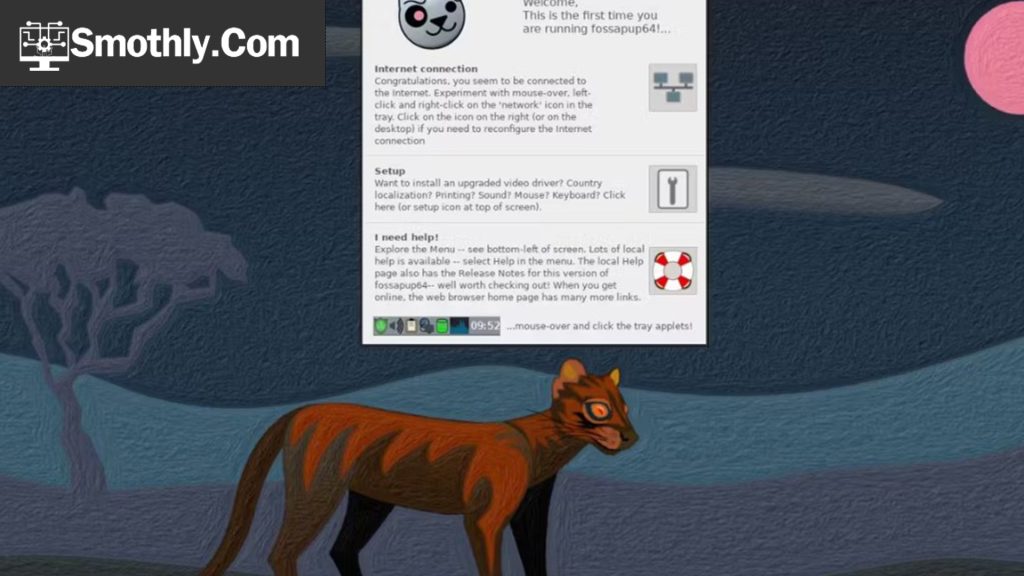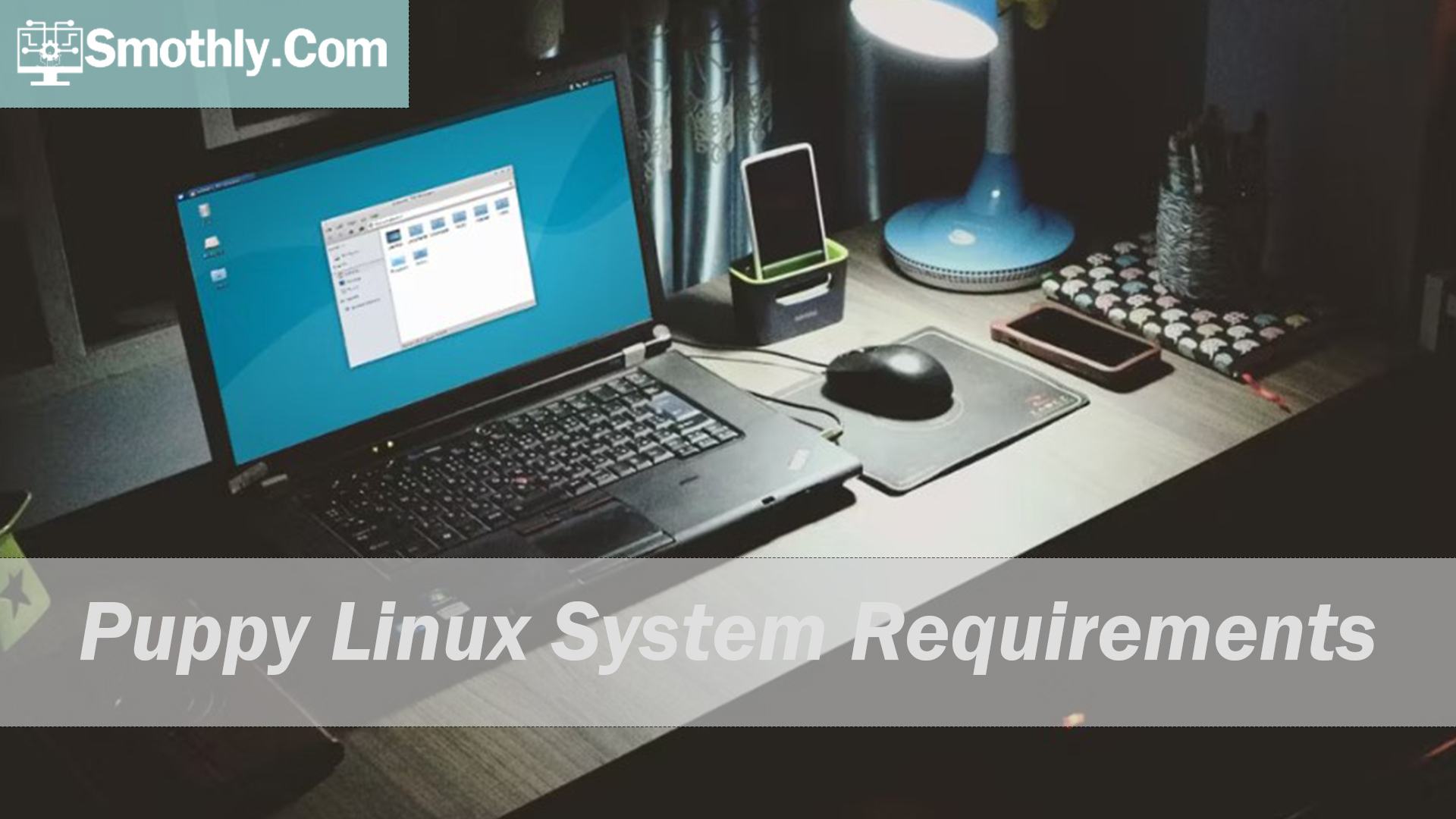Puppy Linux system requirements is designed for users who want an efficient, fast, and simple OS that can breathe new life into older hardware. Its minimal requirements make it a great choice for people who don’t want to deal with heavy system loads or frequent crashes.
What Makes Puppy Linux Special?
Puppy Linux is unlike most operating systems in that it’s incredibly lightweight and doesn’t demand much from your computer. With a small footprint (usually under 300 MB), it can run smoothly on aging machines, and the installation process is incredibly simple. What’s even better is that Puppy Linux can operate directly from a USB drive, giving you the option to test it out before making any long-term changes to your system.
The real beauty of Puppy Linux is how easy it is to use and the speed it brings, even on low-resource devices. Its community-driven nature means users have constant access to new updates, help from fellow users, and various configurations tailored to specific needs.
Official Puppy Linux System Requirements
For anyone looking to install Puppy Linux, here’s what you need in terms of hardware:
- Processor: At least 300 MHz
- RAM: A minimum of 128 MB is required (though having more RAM will improve performance)
- Storage Space: 512 MB of free space on your hard drive or USB stick
- Graphics Card: A video card that supports 1024×768 screen resolution or higher
- Boot Media: You’ll need a USB port or CD/DVD drive to boot the system
These requirements are extremely low, which is why Puppy Linux runs so well on older machines. Even with these specs, it delivers quick start-up times and smooth user experience, making it perfect for low-end hardware.
How to Download and Install Puppy Linux
If you’re looking to get started with Puppy Linux, the process is straightforward and beginner-friendly. Whether you want to try it out as a live USB system or fully install it on your hard drive, follow these steps to get Puppy Linux up and running:
Step 1: Download the ISO File
- Go to the official Puppy Linux website at puppylinux.com.
- Look for the latest version of Puppy Linux and download the ISO file. Be sure to select the right version for your system, either 32-bit or 64-bit, depending on your computer’s architecture.
Step 2: Build a DVD or USB that can be booted
Once you have the ISO file, you’ll need to create a bootable USB drive or burn it to a DVD.
- For USB Drive:
- Download and install a tool like Rufus or UNetbootin.
- Plug in your USB drive (make sure it has at least 1 GB of space).
- Use the tool to select the Puppy Linux ISO file and burn it onto the USB.
- For DVD:
- If you prefer using a DVD, you can burn the ISO file to a blank DVD using any standard disc burning software.
Step 3: Boot from the USB or DVD
Now that you’ve created a bootable USB or DVD, it’s time to boot your computer from it.
- Put the DVD or USB disk into your computer.
- Restart your computer and enter the BIOS/UEFI settings (usually by pressing a key like F2, F10, or Del during startup).
- Change the boot order to boot from the USB or DVD instead of the hard drive.
- Save the settings and exit the BIOS.
Step 4: Try Puppy Linux in Live Mode
Puppy Linux will now boot directly from your USB or DVD. This is called “live mode,” where you can use the operating system without installing it.
- You’ll be greeted by the Puppy Linux desktop, which allows you to explore the OS and see if it fits your needs.
- Live mode is great because it doesn’t make any permanent changes to your computer.
Step 5: Installing Puppy Linux (Optional)
If you decide you like Puppy Linux and want to install it permanently on your hard drive, follow these steps:
- Click on the installation tool on the Puppy Linux desktop.
- Follow the on-screen prompts to partition your hard drive. You can choose to install Puppy Linux alongside your current operating system or erase the drive and install it as the primary OS.
- Choose the file system and partition sizes, then begin the installation.
- After the installation finishes, restart your computer and boot from the hard drive instead of the USB or DVD.
Puppy Linux System Requirements on GitHub
The Puppy Linux system requirements on GitHub provide additional technical details for those interested in deeper insights or development-related information. GitHub is a platform where developers collaborate on open-source projects like Puppy Linux, and you can find official resources, system specifications, and even contribute to the project.
Why Check Puppy Linux System Requirements on GitHub?
- Updated Information: GitHub provides the latest updates regarding system requirements, bug fixes, and new versions.
- Developer Insights: If you’re a developer or an advanced user, the GitHub page lets you explore how Puppy Linux is structured and optimized to run on low-resource hardware.
- Contribute to the Project: If you’re familiar with coding or Linux development, you can even contribute by helping optimize the system further or fixing bugs.
How to Access the System Requirements on GitHub
- Visit the Puppy Linux GitHub page by searching for “Puppy Linux GitHub” or by going directly to repositories like https://github.com/puppylinux-woof-CE.
- Look for files and documentation related to system requirements. These may be listed in README files, installation guides, or other technical documents within the repository.
- You’ll find detailed information on the minimum hardware Puppy Linux requires and possible optimizations for different use cases, such as using it on ultra-low-resource machines or customizing it for specific needs.

What to Expect on GitHub for System Requirements
- Minimal Hardware Specifications: Developers often post configurations that have been tested on extremely low-end hardware, including variations for older processors and minimal RAM.
- Custom Builds: GitHub allows users to explore custom builds of Puppy Linux that may have different system requirements or specific tweaks for performance.
- Community Contributions: You can also see contributions from the Puppy Linux community, helping improve and optimize the operating system based on real-world use
Performance on Older Computers
If you have an old laptop or desktop lying around, Puppy Linux is the perfect solution for making that machine useful again. Many users have reported great success in installing Puppy Linux on devices that struggle with modern operating systems, and it performs well even with limited RAM or a slow processor.
Unlike most operating systems that hog resources, Puppy Linux keeps its footprint small. Even when running from a USB drive, you’ll notice it boots quickly, and programs launch with minimal delay. Whether you’re using it for browsing the web, streaming media, or doing basic office tasks, Puppy Linux provides a solid and reliable experience.
Customization and Flexibility
One of the major draws to Puppy Linux is how customizable it is. It comes pre-installed with essential tools, such as browsers, word processors, and multimedia players, but you can easily add more. The OS’s modular design means you can install only the programs you need, keeping your system fast and efficient.
From tweaking the desktop layout to adjusting how programs run, Puppy Linux gives you the flexibility to make it your own. You’ll find various “puppies” or versions of the OS that cater to different preferences and hardware needs, offering both visual appeal and functionality.
Community Support and Help
One of the best aspects of Puppy Linux is its community. The users behind this OS are passionate and always ready to help newcomers or experienced Linux enthusiasts alike. Whether you’re troubleshooting an issue or customizing your setup, the Puppy Linux forums and online guides are full of resources to make your experience smoother.
If you’re ever stuck, you can also refer to Puppy Linux system requirements GitHub for deeper insights and technical support. The collaborative nature of the community ensures that there’s always someone around to provide guidance, offer fixes, or suggest optimizations.
Conclusion
In conclusion, the Puppy Linux system requirements are exceptionally low, making it a go-to solution for anyone with an old computer or someone looking for a fast, portable OS. Its combination of small size, minimal system demands, and supportive community makes it ideal for both beginners and seasoned users. With such a lightweight design, Puppy Linux brings new life to old hardware, without sacrificing performance.
FAQs about Puppy Linux system requirements
Ans: Yes, Puppy Linux is designed to run efficiently on older, low-end hardware with minimal resources.
Ans: While 128 MB is the minimum, 256 MB or more is recommended for smoother performance.
Ans: Yes, Puppy Linux can also run on modern systems, offering a fast, lightweight experience.
Ans: You can download Puppy Linux from its official website or the GitHub repository.




